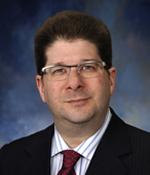
Traumatic facial injuries — from motor vehicle accidents, gunshots, military combat, or other incidents — can cause debilitating effects, such as sunken, jagged facial features and increased scarring. While surgeons can often reconstruct the bones of the face, it’s difficult to return the soft tissue back to its original form. Experts at the UPMC Center for Innovation in Restorative Medicine (CIRM) are researching a new form of facial reconstruction, called fat grafting, to improve soft tissue deformities in the head and face. McGowan Institute for Regenerative Medicine faculty member J. Peter Rubin, MD, Chair of the Department of Plastic Surgery and the UPMC Endowed Professor of Plastic Surgery, as well as Professor of Bioengineering, is the Founding Director of CIRM.
While fat grafting is a common procedure — plastic surgeons performed approximately 65,000 in 2011 — using it for facial reconstruction is a completely new, experimental use of this well-known treatment. It is believed this technique of fat grafting could be of significant benefit to patients with severe head and face injuries.
Fat grafting is a minimally invasive facial reconstructive surgical procedure. Surgeons remove a patient’s own fat from an area where it is less needed and transfer it to areas that have lost shape or fullness. Jeremy Feldbusch, an Iraq war veteran, is a patient of Dr. Rubin. To repair a disfigurement to Mr. Feldbusch’s face due to artillery shrapnel which tore through his skull, Dr. Rubin took fat from his abdomen and thighs and injected it into cavities that his war injuries had left on his face. Mr. Feldbusch’s story can be found here.
Because fat does not have much structure or volume, facial fat grafting is especially challenging. Surgeons and researchers at UPMC are now able to maximize the effectiveness of fat grafting by:
- Stripping down the collected fat to the most dense, stem cell-rich fat.
- Injecting the refined fat into the deformed area.
Researchers believe that this stem cell-rich fat promotes blood vessel growth and blood flow, volume, and lift, which is crucial for not only the survival of the fat graft but also to promote healing and stability. Through research, Dr. Rubin and his team have determined that the fat stabilizes about 3 months after the procedure. In 3-year follow-ups, the fat retained the same volume as it had at 3 months.
Read more…
